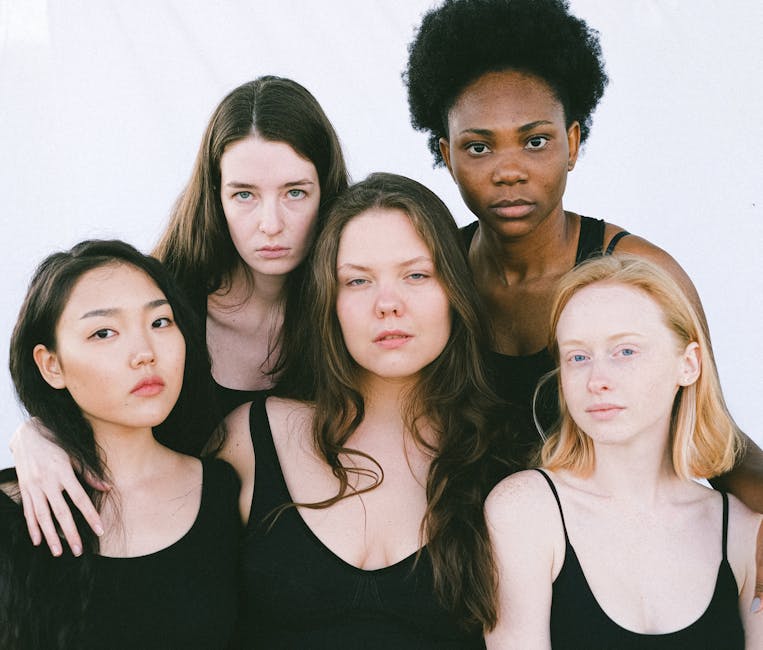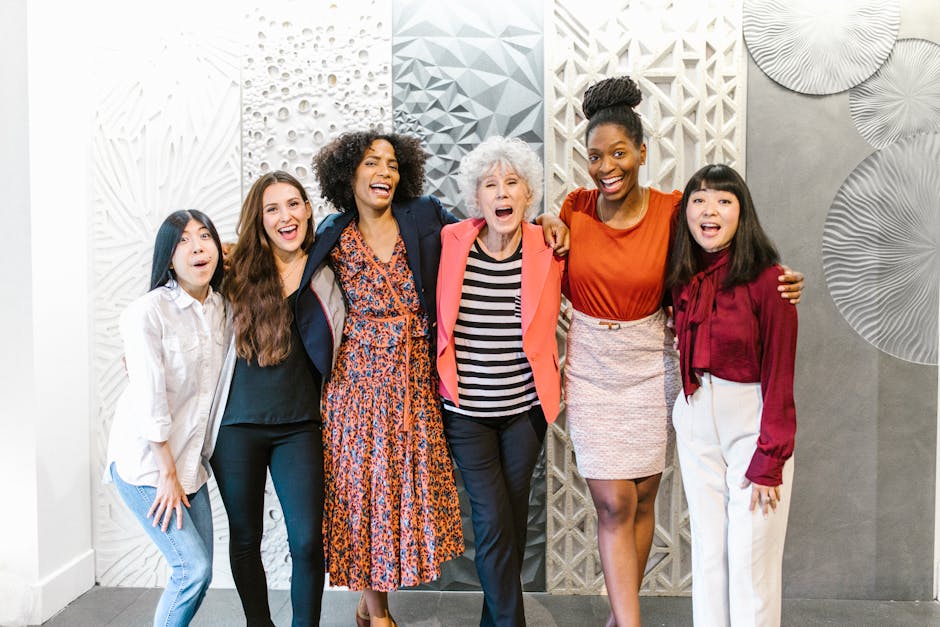Ways To Be More Inclusive In Friend Groups
Feeling included in a friend group can make all the difference in someone’s life. Whether it’s about financial comfort, social dynamics, or simply feeling seen, inclusivity is the glue that holds friendships together.
But how do you make sure everyone feels welcome and valued? It’s not as complicated as it sounds, and with a few thoughtful changes, you can create a space where everyone thrives. Let’s dive into some practical ways to make your friend group more inclusive.
Key Takeaways
- Inclusivity means recognizing and celebrating diversity within your group.
- Financial and social inclusivity are essential for maintaining strong friendships.
- Open communication and empathy are the foundation of an inclusive atmosphere.
- Small actions, like respecting pronouns or planning budget-friendly activities, can make a big impact.
Understanding Inclusivity in Friend Groups
Defining Inclusivity and Its Importance
Inclusivity is about making sure everyone feels like they belong. It’s not just about inviting people to hang out—it’s about creating an environment where they feel respected and valued.
When your group is inclusive, friendships grow stronger, and everyone feels more connected. It’s like planting a garden where every flower gets the sunlight it needs to bloom.
Recognizing Diversity Within Friend Groups
Every friend group is a melting pot of personalities, backgrounds, and experiences. Some friends might be introverts, while others are social butterflies.
Acknowledging these differences helps you understand what makes each person tick. This awareness is the first step toward building a more inclusive group.
Identifying Barriers to Inclusivity
Sometimes, barriers to inclusivity are subtle. Maybe someone feels left out because they can’t afford certain activities, or perhaps they’re hesitant to share their thoughts because they fear judgment.
Recognizing these barriers allows you to address them head-on. After all, you can’t fix what you don’t see.

Financial Inclusivity in Friend Groups
Being Open to Discussing Money
Breaking the Stigma Around Financial Conversations
Talking about money can feel awkward, but it’s essential for inclusivity. Normalizing these conversations helps everyone feel more comfortable.
For example, instead of assuming everyone can afford a fancy dinner, ask, “What’s everyone’s budget for this outing?” It’s a small step that can make a big difference.
Encouraging Transparency About Costs
Be upfront about the costs of activities. If you’re planning a trip, break down the expenses so everyone knows what to expect. Transparency fosters trust and avoids misunderstandings.
Planning Activities That Accommodate Different Budgets
Suggesting Free or Low-Cost Activities
Not every hangout needs to break the bank. Picnics, game nights, or even a simple walk in the park can be just as fun as expensive outings.
If you’re looking for more ideas, check out these strategies for building and maintaining strong friendships for budget-friendly inspiration.
Avoiding Assumptions About Others’ Financial Situations
Never assume someone’s financial situation based on appearances. Just because someone has a nice car doesn’t mean they’re comfortable spending money on every outing.
Supporting Friends in Financial Discomfort
Normalizing Phrases Like “It’s Not Within My Budget Right Now”
Encourage friends to speak up if something is out of their budget. Phrases like “I can’t swing that right now” should be met with understanding, not judgment.
Being Empathetic to Financial Challenges
Empathy goes a long way. If a friend is struggling financially, offer support without making them feel uncomfortable. Sometimes, just listening is enough.

Social Inclusivity with Limited Free Time
Prioritizing Meaningful Connections
Scheduling Quality Time with Friends
Life gets busy, but making time for friends shows you care. Even a quick coffee date can strengthen your bond.
Balancing Commitments and Friendships
It’s all about balance. While work and family are important, friendships deserve attention too.
Being Intentional About Inclusivity
Rotating Group Activities to Include Everyone
Not everyone enjoys the same activities. Rotate between different types of hangouts to cater to everyone’s preferences.
Checking In with Friends Who May Feel Left Out
If someone hasn’t joined in a while, reach out. A simple “Hey, we miss you!” can make someone feel valued.

Welcoming Friends Regardless of Appearance or Identity
Avoiding Assumptions Based on Appearance
Recognizing That Identity Is Not Always Visible
You can’t always tell someone’s story just by looking at them. Be open-minded and avoid jumping to conclusions.
Respecting Pronouns and Names
Using the correct pronouns and names is a basic way to show respect. If you’re unsure, just ask—it’s better than guessing.
Including Individuals from Diverse Gender Identities
Being Mindful of Non-Binary and Trans Friends
Create a space where everyone feels safe to be themselves. This might mean rethinking group traditions or language to be more inclusive.
Creating a Safe Space for Open Expression
Encourage friends to share their thoughts and feelings without fear of judgment. A safe space is a happy space.

Encouraging Open Communication
Fostering an Environment of Trust
Listening Actively to Friends’ Concerns
When a friend shares something, listen without interrupting. Sometimes, they just need to vent.
Addressing Misunderstandings Respectfully
If conflicts arise, handle them with care. A calm conversation can resolve most issues.
Promoting Honest Dialogue About Inclusivity
Discussing Ways to Improve Group Dynamics
Ask your friends, “How can we make our group more welcoming?” Their answers might surprise you.
Encouraging Feedback from All Members
Feedback is a gift. Use it to grow and improve your group dynamics.

Celebrating Differences Within the Group
Embracing Cultural and Personal Diversity
Learning About Each Other’s Backgrounds
Take the time to learn about your friends’ cultures and traditions. It’s a great way to deepen your connection.
Celebrating Unique Traditions and Experiences
Whether it’s a holiday or a personal milestone, celebrate together. These moments bring people closer.
Valuing Different Perspectives
Encouraging Diverse Opinions in Conversations
Diverse opinions make conversations richer. Encourage everyone to share their thoughts.
Avoiding Judgment or Criticism
Respect each other’s viewpoints, even if you disagree. It’s okay to see the world differently.
Building a Supportive and Inclusive Atmosphere
Being Mindful of Group Dynamics
Ensuring Everyone Feels Heard and Valued
Make sure everyone gets a chance to speak during group discussions.
Addressing Exclusionary Behavior Promptly
If you notice someone being left out, step in. Inclusivity is everyone’s responsibility.
Encouraging Kindness and Empathy
Supporting Friends During Difficult Times
Be there for your friends when they need you. A little kindness goes a long way.
Celebrating Each Other’s Successes
Cheer each other on! Celebrating wins, big or small, strengthens friendships.

Adapting to Changing Friend Group Dynamics
Welcoming New Members into the Group
Introducing New Friends to Existing Members
Help new friends feel at home by introducing them to the group.
Helping New Members Feel Comfortable
A warm welcome can ease any nerves.
Maintaining Inclusivity as the Group Evolves
Adjusting Traditions to Include Everyone
As your group grows, adapt traditions to make everyone feel included.
Being Open to New Ideas and Perspectives
Fresh ideas keep the group dynamic and exciting.
Educating Yourself and Others on Inclusivity
Learning About Inclusivity Practices
Reading Books or Articles on the Topic
Knowledge is power. Dive into resources that teach you about inclusivity.
Attending Workshops or Events
Workshops can provide practical tips for fostering inclusivity.
Sharing Knowledge with Your Friend Group
Encouraging Discussions About Inclusivity
Start a conversation about inclusivity with your friends.
Leading by Example in Inclusive Behavior
Actions speak louder than words. Be the change you want to see.
Reflecting on Your Own Behavior
Identifying Personal Biases
Acknowledging Areas for Improvement
We all have biases. Recognizing them is the first step toward growth.
Taking Steps to Overcome Biases
Challenge your assumptions and strive to do better.
Committing to Continuous Growth
Regularly Evaluating Group Inclusivity
Check in with your group to see how you’re doing.
Staying Open to Feedback and Change
Growth is a journey, not a destination. Keep learning and improving.
Inclusivity isn’t just a buzzword—it’s the foundation of meaningful friendships. By making small changes, you can create a friend group where everyone feels valued and supported.
For more tips on fostering positive relationships, check out how to create a supportive friend group or how to maintain individuality in friendships.
Let’s make the world a friendlier place, one group at a time!
FAQ: Ways to Be More Inclusive in Friend Groups – Building Stronger Connections Together
What does it mean to be inclusive in a friend group?
Being inclusive means creating an environment where everyone feels valued, respected, and welcome. It involves actively considering others’ feelings, perspectives, and needs, and ensuring that no one feels left out or marginalized within the group dynamic.
Why is inclusivity important in friend groups?
Inclusivity fosters a sense of belonging and strengthens relationships within the group. It helps create a supportive and accepting environment where everyone can thrive, reducing feelings of isolation and promoting mutual respect and understanding.
How can I make new members feel welcome in my friend group?
Introduce them warmly, involve them in conversations, and make an effort to learn about their interests. Encourage other group members to engage with them and ensure they feel included in group activities and decisions.
What are some practical ways to ensure everyone feels heard in group discussions?
Actively listen when others speak, avoid interrupting, and encourage quieter members to share their thoughts. Create a safe space where everyone feels comfortable expressing themselves without fear of judgment.
How can I address unintentional exclusion in my friend group?
If you notice someone being left out, gently bring it to the group’s attention and find ways to include them. Reflect on group dynamics and encourage open communication to ensure everyone feels valued and included.
What role does empathy play in fostering inclusivity?
Empathy helps you understand and appreciate others’ perspectives and experiences. By practicing empathy, you can better identify and address any barriers to inclusivity, creating a more supportive and understanding environment.
How can I celebrate diversity within my friend group?
Acknowledge and appreciate the unique backgrounds, cultures, and experiences of each member. Encourage sharing of traditions, stories, and perspectives, and create opportunities to learn from one another.
What should I do if someone in the group feels excluded?
Approach the situation with sensitivity and listen to their concerns. Work with the group to address the issue and find ways to make them feel more included moving forward. Open communication is key to resolving such situations.
How can I encourage inclusivity in group activities?
Plan activities that cater to diverse interests and abilities, ensuring everyone can participate. Be mindful of accessibility and preferences, and involve the group in decision-making to ensure everyone’s voice is heard.
What are some signs that my friend group might need to work on being more inclusive?
Signs include certain members consistently being left out of conversations or activities, lack of diverse perspectives, or individuals feeling uncomfortable or unheard. Regularly check in with group members to ensure everyone feels valued and included.



